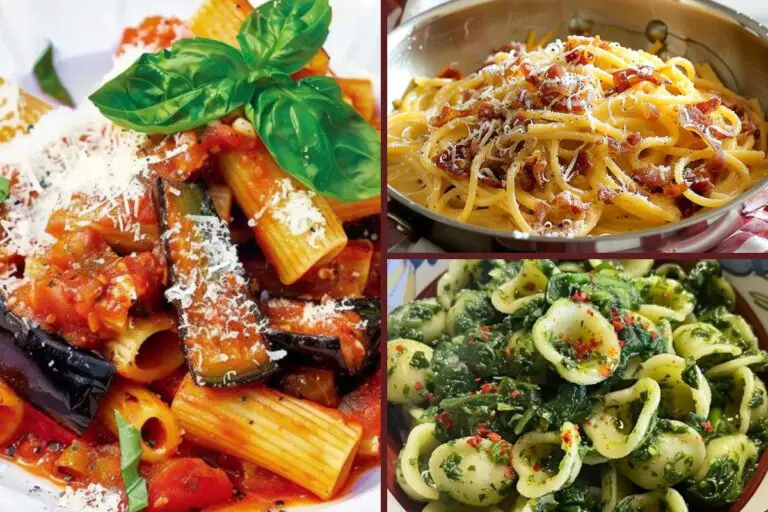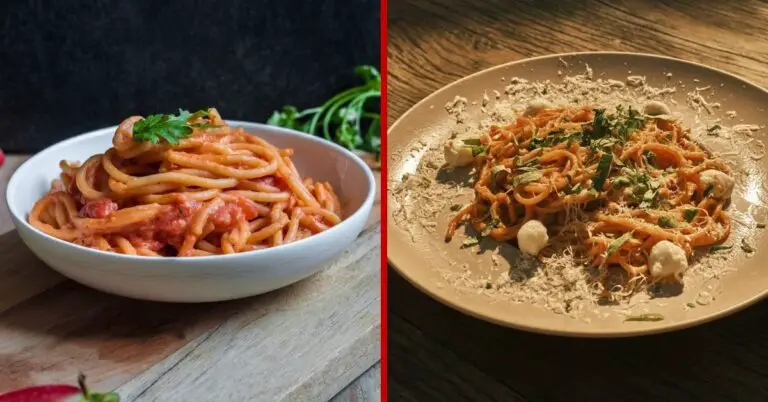For us Italians, pasta is not well-cooked if it is not “al dente”; this way expression literally means cooked “to the tooth” and it is used to refer to pasta that is not entirely cooked, or rather, which maintains a degree of internal hardness without being excessively sticky.
Pasta al dente has a slightly tougher texture than overcooked one, which on the other hand, is much more tender and mushy.
According to a survey that investigated “what leads us to say that one pasta is better than another?” Italians put firstly the fact that pasta remains al dente, keeping its cooking well (77%), then they think it is made with quality wheat (68%) and, finally, that it binds perfectly to the right sauce (60%), by creating that masterpiece of taste that produces our national dish.
Strange fact: pasta al dente is liked more by women between 35 and 54 years old, who live in central Italy and in the North-East (less in the South and on the islands).
So, is it just a matter of taste? No!
Although it is indisputable that overcooked, sticky and mushy pasta reserves a very different and less pleasant chewing experience and, consequently taste (here you see how to cook it to avoid all this), there are many reasons to prefer pasta cooked al dente instead of overcooked one.
Let’s start immediately by explaining why overcooked pasta is not recommended, beyond its mushy and sticky taste.
Overcooked pasta: this is why it is avoided in Italy
You will understand why pasta al dente is recommended, as well as for its taste but also to avoid eating overcooked pasta, since this (too much) cooking brings with it several issues.
It has been scientifically proven that overcooked pasta:
- It is less digestible – being “sticky” it becomes a problem for the digestive enzymes which struggle to break down its structure;
- It has a role in increasing blood sugar levels in our system;
- It is the cause of weight gain.
Without going into detail, the reason for this evidence lies in the connection between starch and gluten: the longer the cooking, the more the starch molecules break down, leaving us in the meal – we can surely say it – to sugars and, therefore, to carbohydrates.
Obviously, the Italian choice of eating pasta al dente does not derive from these recent health discoveries; however, it is doubly pleasing to know that a tradition of taste also finds confirmation in science and “in what is good for us”.
So, let’s get to the point: what exactly does “al dente” mean and how do you understand when the pasta’s cooking process has reached the point we can define as “al dente”? Except for trust and follow the recommended cooking times if they are written on the pasta box.
Recognize pasta al dente? A question of “white soul”
Now that we’ve seen that pasta al dente is simply slightly undercooked pasta, we have to figure out how to get it.
That “slightly” is a fairly customizable measure, in the sense that there are people who prefer a more or less al dente taste, so you can decide to drain it a minute before or after, always by anticipating a “too complete” cooking. Basically, it is a matter of consistency and of internal hardness’ degree.
According to someone, when pasta is cooked al dente, it remains a small, harder white part inside (the so-called white soul). Others believe that to be cooked al dente, there should no longer be any white parts inside the pasta.
I personally tend to lean towards the first version, I like that there is still a slightly white internal soul.
Although three areas can be identified in cooked pasta – one more internal, one intermediate and another external one – with different features in terms of cooking, the pasta is al dente just after the small white part in the center almost begins to disappear.
Therefore, in order to understand if cooking at the right point (or rather, al dente), the only possible strategy is to taste a single piece of pasta.
However, there are other techniques as well.
For example, in restaurants where it would be inconvenient for the cooks to taste the customers’ food, the cutting trick is used a lot: you take a macaroni, divide it with a knife and evaluate the resistance it opposes.
Its section near the cut is also examined: if you notice a soul (the inner part exposed by the cut) that is too white, it means that the inner parts have been not hydrated yet by the boiling water, so it is too early to drain it; if it is not, proceed.
It sounds like crazy stuff, but I assure you it is a step that lasts a few seconds and it is part of the daily habits of many chefs and inn owners.
Differences between pasta al dente and pasta al chiodo
Briefly summarizing the main features of pasta al dente:
- the strength of “al dente” can vary according to personal tastes;
- the cooking duration is exactly the one suggested by the package or even a little shorter;
- understanding the right time to remove pasta al dente from the heat depends on the essential tasting step;
- when it is cut, it can reveal a thin white soul which must not be too thick and hard or even crunchy;
- it has a calloused structure, which resists the pressure of the teeth;
- it is easier to digest.
However, there is another cooking method, even shorter than that required for pasta al dente, and we are speaking of pasta al chiodo which literally means nail pasta. What is it and when is it useful?
You must know that, very often, Italians prefer to complete the cooking phase along with the sauce of the ingredients of our recipes: this means hydrating (and keeping to cook) our macaroni even with the same sauce. The result is an absolute pleasure for the personal taste.
However, in order to do this, we cannot drain the pasta when it is already at the right point of cooking, we would risk ruining everything: we move a little earlier. When biting into it, we hear that “crock” typical of macaroni that should boil for a few more minutes. In this case, the white soul is much thicker and more visible and it is easy to direct yourself even with the finger cutting method.
We guarantee a perfect creaming, in which the sauce becomes an integral part of the pasta that it is called upon to garnish and it ends the cooking of pasta by taking it from “pasta al chiodo” to “pasta al dente”.
Recovering overcooked pasta: remedies for latecomers
It can happen that you get distracted without draining the pasta when it is at the right point of cooking. Moreover, we must not forget that even a too-long stay in the colander can result in very bad surprises, like sticky pasta.
So, how is it possible to recover a dish of mushy macaroni? The best remedies are three:
- if pasta is still hot and just drained, you can put it under cold water (exceptionally only in this case) or rest in a bowl with ice, blocking the decomposition of the starch and searing everything in the pan, once the sauce has been added;
- opt for a recipe au gratin in the oven (just a few minutes of patience and the taste will thank you a lot);
- prepare a delicious pasta omelet with eggs and cheese, with that delightful and irresistible crust that makes us forget any regrets.
If the pasta turns out to be too al dente, just concentrate on creaming it, by completing the cooking along with the sauce, just like you do with pasta al chiodo.
On the other hand, we must not forget that even too hard pasta can create digestive issues because it is difficult to manage by stomach acids.







